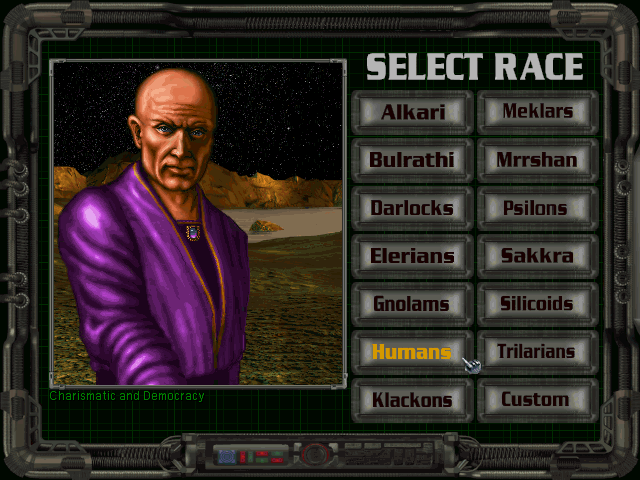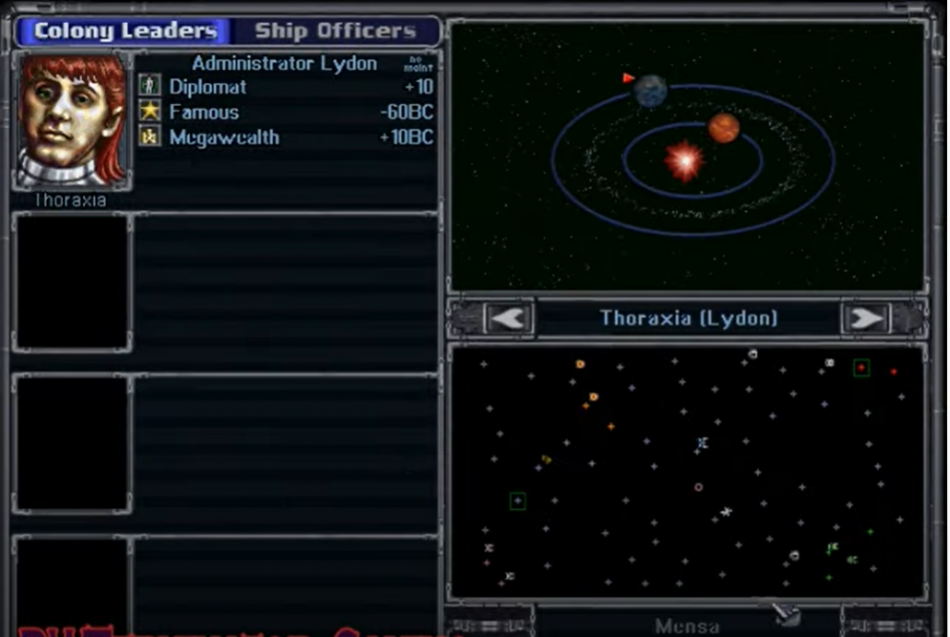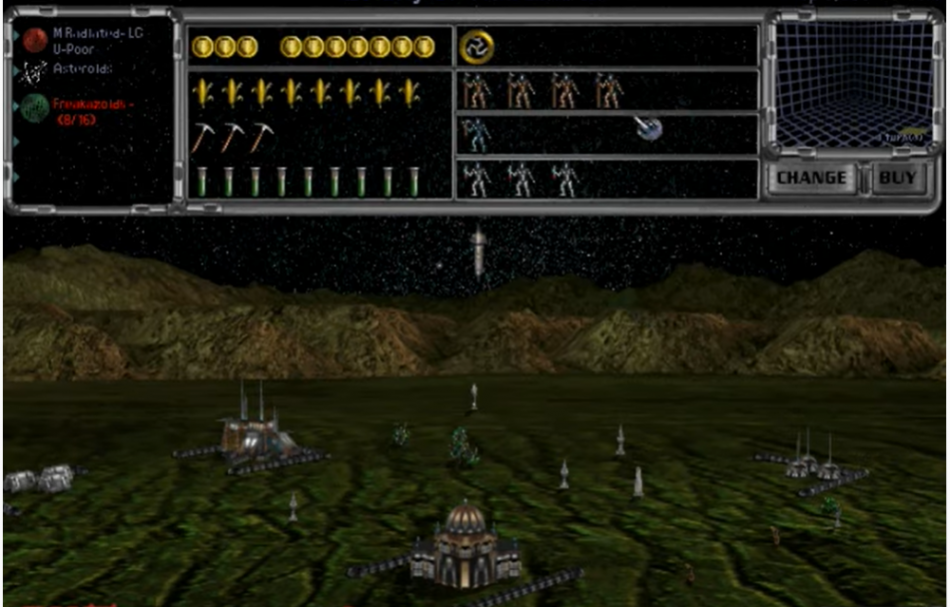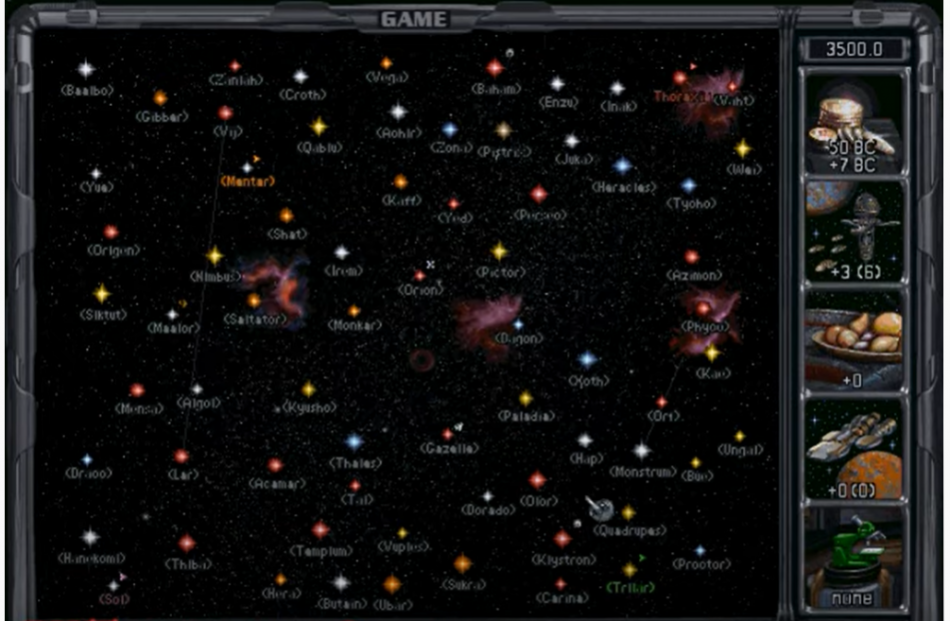Master of Orion Series Retrospective (Part Two)
 By Patrick S. Baker
By Patrick S. Baker
In 1993, MicroProse published two huge hits: Civilization and Master of Orion. The company soon pushed forward on sequels for both. Simtex, after developing the first Master of Orion, produced a port of the Avalon Hill railroad and robber baron game board game, 1830, which was published by Avalon Hill.
Then they developed Master of Magic, a 4X fantasy game that was published by MicroProse. Shortly after the release of Master of Magic, MicroProse procured Simtex, renamed it MicroProse Texas, and made it an internal develop division. This made the sequel technically an in-house MicroProse production, although the Simtex logo still appeared briefly at the start of the game.
Originally titled Master of Antares the game was quickly retitled Master of Orion 2: Battle at Antares (sometimes MoO2:BaT, or MoO2 or BaT). Steve Barcia and Ken Burd, still at Simtex, returned as part of the development team for the sequel. Meanwhile, MicroProse was still the publisher and partnered with MacSoft for the Macintosh version.

MoO2 was much more complex than the first game and included some ideas lifted straight from Master of Magic, like hiring wandering leaders as planetary governors or military leaders and having dragons guarding some of the planets. There were now 13 preset races from which to choose, three more than the first game.
Also, the player could design their own race based on a selection of traits that provided advantages and disadvantages in agriculture, manufacturing, research, population growth, finances, space and ground combat, and spying. The player could have added “special abilities” to their race such as telepathy, luck, high-gravity physiology, etc.

The player could also select their form of government from feudalism, democracy, dictatorship, or unification, as with the race selection, government selection conveyed both advantages and disadvantages. Governments could be upgraded through research.
Instead of only one planet per solar system, MoO2 had systems with up to five planets, in which one race could occupy some of the planets and other races could occupy others. Food was added to the economy of the game. Tactical combat was now more flexible with the ships able to maneuver and space marines could now board and capture enemy ships. MoO2 included a multiplayer mode for up to eight human players.

There were three ways to win the game: Conquer all other races; Get elected as the supreme leader of the galaxy by a two-thirds vote in the council; Or successfully assault the Antaran home-world. Subjugating the Orion star system did not automatically win the game, but did make winning much more likely.

The game was released on 22 November 1996 in MS-DOS and Windows 95. A year later the Macintosh version was released. MoO2 got generally good reviews with the Metacritic aggregator having the game at 84 out of 100 with professional reviews, while users gave it an aggregated 9.1 out of 10. Reviewers praised the improved graphics and the high replay value.
The new interface and management system was the subject of differing opinions. The Strategy Plus reviewer thought that accessing vital information was needlessly difficult. The GameSpot reviewer said those “who love strategy games will go nuts for Master of Orion II” but the “complexity of design is more than most beginners will be able to tackle without becoming frustrated and confused.”

A reviewer for the Macintosh version called the user interface “clunky.
MoO2 won the “Origins Award for Best Fantasy or Science Fiction Computer Game of 1996”. The game proved more of a bridesmaid than a bride in other games’ award competitions that year. It was a finalist for the Computer Game Developers Conference’s “Best Strategy/War Game Spotlight Award of 1996”. MoO2 was nominated as Computer Games Strategy Plus‘s 1996 “Turn-based Strategy Game of the Year” but lost to Civilization II. It was also a finalist for Computer Gaming World’s “Strategy Game of the Year” 1996 award but again lost to Civilization II. However, the game was named the 39th best computer game ever by PC Gamer UK in 1997.
Sales for the sequel were at least as good as the original game with worldwide sales passing 200,000 units by January 1997. Another sequel was envisioned, but it would take some 6 years before that sequel would be developed and released.
Patrick S. Baker is a former US Army Field Artillery officer and retired Department of Defense employee. He has degrees in History, Political Science and Education. He has been writing history, game reviews and science-fiction professionally since 2013. Some of his other work can found at Sirius Science Fiction, Sci-Phi Journal, Armchair General and Historynet.com.
Sources:
Computer Gaming World Magazine: May 1997 at Computer Gaming World Museum
Computer Games Strategy Plus March 1997 at http://www.cdmag.com/articles/
Dimension Z Online. “Master of Orion II (Mac)”
Gamespot 23 November 1996 “Master of Orion: Battle at Antares Review”
“History of Master of Orion, The” at Making Games
ING “PC Retroview: Master of Orion II”
Master of Orion II: Battle at Antares: The Official Strategy Guide by John Possidente and David Ellis (Rocklin, CA: Prima Publishing, 1996)
Metacritic: Master of Orion II: Battle at Antares
Next Generation Magazine April 1997
Strategy Plus January 1997 “Master of Orion II: Battle at Antares”
